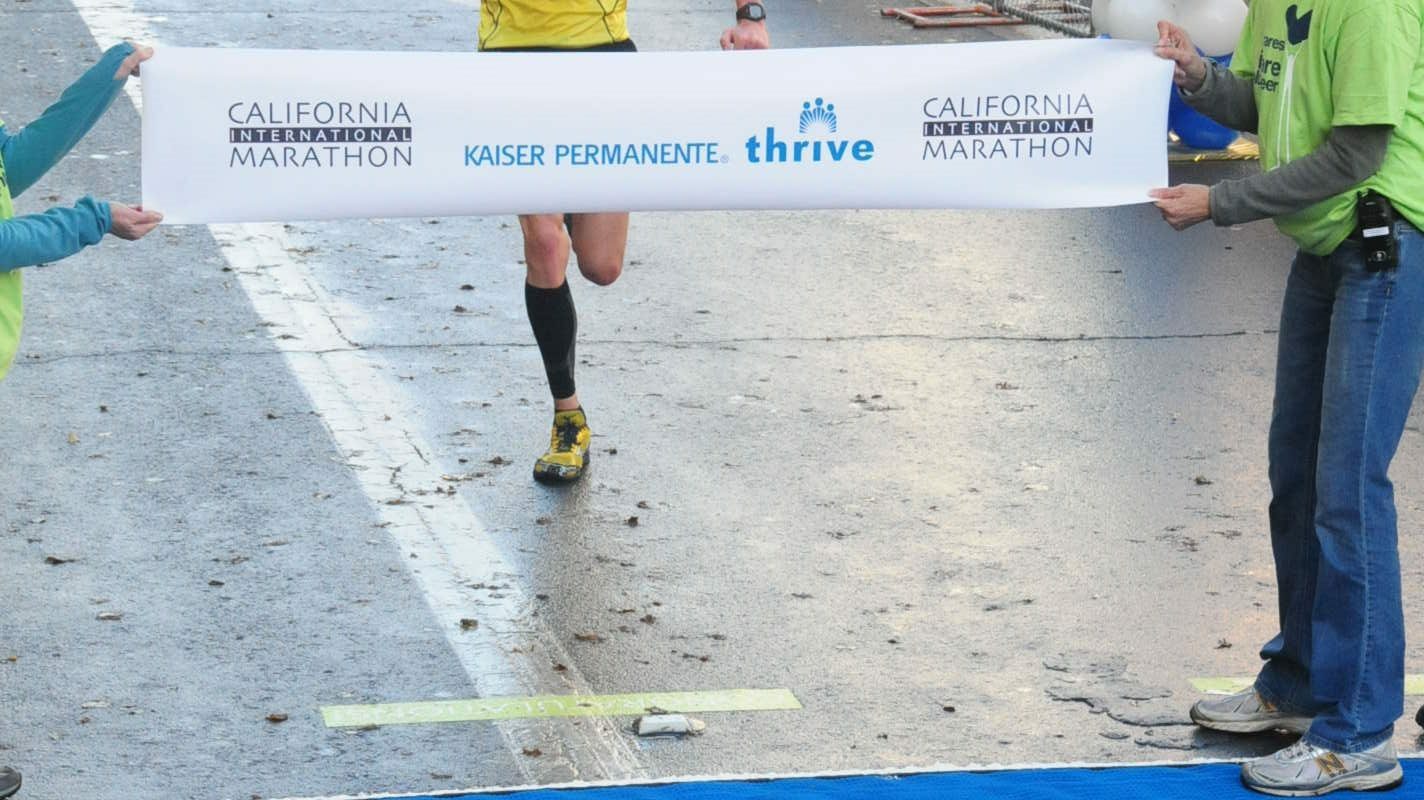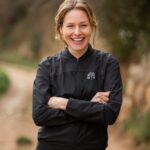
Dylan Wykes talks CIM
Q: You won CIM with a wicked fast time of 2:12:39 back in 2010 (pre super shoes 😱). Can you talk us through that race – word is you also led from start to finish?!
A: I entered the race with the best marathon training block of my life and I was hopeful that I could compete for the win. It was a race that was typically won in 2:10-2:15. At the time my PB was 2:15. So it was a good race for me to be in with the goal of competing, more so than focusing on finishing time.
There was a big lead pack of about 15 runners that established in the first ½ mile, with one runner on his own about 50m in front of everyone else. I didn’t feel like I could relax in the big pack so decided to bridge the gap to the lead runner. When I caught up to him 1 mile into the race he almost immediately slowed down, likely with the intention of letting the pack catch back up. I felt good (as one should that early in a marathon) and made the decision to just keep going at my own pace at the front.
From there I was just ticking off the miles at a pace that was fast, but not crazy. I did expect the pack would catch me at some point and didn’t pay a lot of attention to them. It wasn’t until about 6 miles that I realized I was really far ahead. At that point it was a bit of an adrenaline rush and my goal was to not give up the lead.
By halfway I was more than 1 minute in front and came through in 1:05, on pace for a big PB. I still felt great and was super motivated to try to run a really fast time and win the race.
Things started to get hard at 20miles, as they usually do. At that point I was less focused on running a good time and more focused on not getting passed by anyone. I told myself to not look back, because I didn’t want to know if they were getting closer, but I could tell by the time between when a crowd of people would cheer for me and then for the runners behind me, that my lead was dwindling.
I went through a really rough patch from miles 22-24 and my lead was cut down to about 15seconds. But, I managed to rally in the last 2 miles and hold off a fast charging second place. I was ecstatic to win. Running 2:12 and winning was a big confidence booster for me heading into the qualifying period for the 2012 Olympics. Also, the first place prize was $10000USD. That was very significant for me at that time, it probably made up almost half of my annual income as a “professional” runner.
Q: What was your training like in the lead up to CIM? How did you approach your build and taper?
A: My training for this race was at a different level from any previous training block for a marathon. I moved to Vancouver in September of 2010, about 10 weeks before the race, to put more focus on my running. My coach, Rich Lee, was at almost every workout and I had some great training partners in the Vancouver area. This was different from previous training blocks leading into marathons, where I would do almost everything on my own. The training was harder than ever before, but I was also more focused on rest and recovery. I was running ~110 miles per week, with hard workouts on the track and long runs on the rolling hilly road loop around Stanley Park. I definitely reached a new level of fitness and confidence throughout the build up.
The taper phase was as agonizing as ever. I knew I was at this new level of fitness, so I was pretty anxious to be able to perform at that level on race day. I always say to my athletes it doesn’t matter if you’ve had a great build up or a terrible build up the taper is always tough to get through.
Q: For those new to racing the marathon on this course, which looks to be point to point, any tips on how to best tackle the distance over this terrain?
A: The course is great. It starts in Folsom (think Johnny’s Cash’s Folsom Prison Blues for some pre-race inspiration. ha) and finishes in downtown Sacramento.
The first thing I would recommend with this point to point race is do not miss your bus to the start! The race is very well organized, but be sure to check the bus schedule and don’t wait to get on the last bus.
The course is notoriously fast with a net downhill of 366 feet. For reference the Boston Marathon has a net downhill of about 450 feet.
I think the best way to approach this course is to not be focused on hitting exact/consistent splits. Instead you need to run by feel and give yourself a wider range of expected split times along the way. This is mostly because some sections of the course are significantly down, others are hilly, and some are pancake flat.
The most significant downhill section is from 2-6 miles. It’s important to not get too excited when you start seeing some faster times on your watch. It’s too early in the race to know if you’re on for a great day. So rein it in and stick to your game plan.
From 6 to 11 miles you hit some significant hills. If you’ve not trained for hills or came to CIM expecting no hills this section will be tough. Don’t force it on the uphills and don’t try to make up time on the down hills.
Once through the hills you need to try to find a good rhythm. Between 13 and 20 miles you should try to run some more consistent splits. If you’re feeling good at this point you’ll be knocking off each mile at a good pace and feeling excited. Try not to get too excited here though.
The last 6 miles of the course are where you get the least amount of downhill running. You’re still heading slightly downhill, but at this stage of the race it doesn’t feel like it. Once you cross the American River at ~21miles it’s a long straight shot down the wide open streets of downtown Sacramento. If you’re having a day you’ll fly through the past 6 miles and not notice how daunting the long straightaway is. But if you’re strating to struggle you have to break the race down into really small segments at this point. Try not to count the street numbers as you pass (Just past Mile 22 you hit 58th street, and you’ll go all the way down to 7th street). Instead take things half a mile at a time and try set yourself a goal for each segment.
The finish in front of the Capitol building is awesome, but it comes up on your quickly, after two late race left turns. Try to take a minute to soak in your accomplishment as you cross the finish line.
Q: It looks like a super early race start (7:00 AM). How do you recommend athletes approach their morning to make sure they get to the start line ready to roll and at their best?
A: It’s all about being organized. As I mentioned before you don’t want to miss that bus to the start line, so definitely set an alarm or two and check the shuttle schedule.
Do your best to get everything in order the night before. Make a checklist of everything you’ll need in the morning and get it set out and ready to go. That includes your breakfast, racing gear, race fuel, warm clothes for prior to the race, etc. Don’t leave it to the morning of the race to get organized.
Make sure you eat breakfast. I always pack my race morning breakfast with me. It’s too energy and time intensive to actually go find breakfast, even at a hotel restaurant, the morning of a race, especially a race that starts this early.
Q: Sacramento is a great city: any recommendations on the best pre-race running routes, go-to cafes, or post marathon beer spots?
A: There are some nice bike paths along both the Sacramento and American Rivers. I’d recommend going there for a short run the day before the race, if it’s not too far out of the way. If you’re right downtown, Capitol Park is a nice place to get in a few easy shakeout miles too.
Thanks for the insights Dylan and best of luck to everyone racing this weekend!
_
Sign-up for Personal Coaching with Dylan Wykes
For participants in this year’s California International Marathon, check out the full event details here: https://runsra.org/california-international-marathon/general-information/
 Elly Woods
Elly Woods